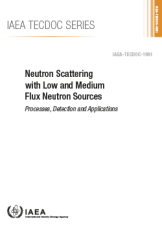Neutron imaging is a non-destructive technique for analysing the structure of a sample. The basic principle is similar to that of X ray radiography: a beam of neutrons passes through the sample and is attenuated in accordance with the sample's composition or its geometrical form.
Neutron imaging is based on the same principles as X ray imaging but neutrons interact with the atoms' nuclei rather than with their electrons. Contrary to X rays, however, neutrons are also attenuated by some light materials, such as hydrogen, carbon, boron and lithium, and penetrate many heavy materials, such as titanium and lead. This characteristic gives neutron imaging an advantage over X ray imaging when it comes to 2D and 3D visualizations.
Until the 1990s, the dominant detection systems for neutron imaging were film-based and simply known as neutron radiography. They used X ray film and converters with track etch foils. Since then, detection methods have improved drastically: digital processing systems have been introduced and advanced neutron imaging beam lines have been built.
As a result of these innovations, and owing to different attenuation contrasts compared with the more common X ray methods, new and challenging application fields have been established:
- Determination of hydrogen in electrochemistry analyses of fuel cells
- Dynamic efficiency and performance study of batteries or engines
- Applications in car, aviation and building industry for quality control of various objects
- Non-invasive study of cultural heritage objects and biological samples
- Applications in geology and soil physics
- Non-destructive examination of nuclear fuel and its cladding
- Investigation of several aspects of materials research





